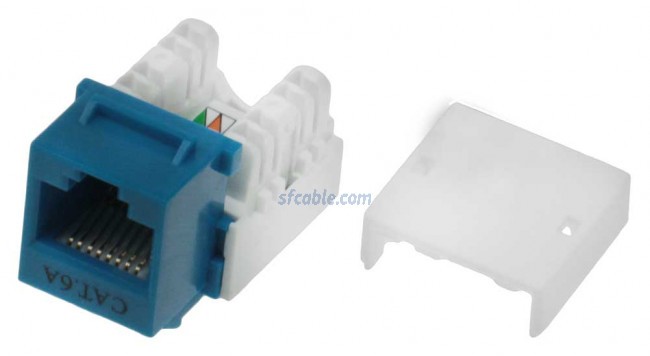Know About The Little Essentials Needed for Creating a Vast Network
For creating a network and for bringing a device into a network, we must connect a portable device with the central processing unit (CPU). The USB cables, optical fibers and other Networking cables facilitate this. However, these network cables deem worthless if a port does not mount on the unit. A cable cannot connect a port less device with the central unit or the port less unit with the device!
So, what enables our portable devices like keyboard, pointer, printer, digital camera connect with the CPU using Ethernet cables, USB Cables or optical fibers?
The answer is a Keystone Jack!

What is a Keystone Jack?
A Keystone Jack is the magic port, which aids this functionality. Every connecting device has a female unit installed on them. Networking cables have the attachment of male chords on their ends, which have the name “keystone plugs.” They mate and the portable devices connect where we want it to get connect. Hence, Keystone Jacks are one of the most important units in networking. They have a design to get a fix into keystone plates, keystone boxes, and patch panels.
Nature of Keystone Jacks
They have a standard design, they are flexible, and they are easily mountable, even on the wall! Multiple keystone jacks can have installation on a single plate having multiple ports. They are available in multiple variants and you can choose in accordance of your need.
Keystone jacks have an extensive use in data communications.
The manufacturing of these tools is in a standard size for their usability in patch panels, surface mount boxes, and keystone wall plates. This means we get a universal fit across all brands.
There are some variations, however, as high-density keystone jacks have designs to maximize space when working in a congested area. These jacks permit fitting of more individual jacks into a single patch panel and have a design for its use in high-density patch panels.
Cat5e, Cat6, Cat6a Dilemma
Cat5e and Cat6 cables plug into the same keystone Jack of your Ethernet jacks, routers, and switches. However, have a distinct use, design, and application. Both these cables come as twisted pair cables consisting of copper wires.
Speed
The Cat5e Keystone Jack supports speed limit up to 1000MBPS and the Cat6 cables has a speed limit up to 10GBPS over 120-150 feet. The speed of cat6e has a 10GBPS (Gigabit) is limit up to 164 feet and thereafter its speed is same as that of Cat5e.
Cost
The cost of the cables varies by length and differs from manufacturer to manufacture. The standard Cat5e costs generally around $0.20 per foot. In addition, the standard Cat6 costs around 20% higher than the Cat5e.
Frequency
The Cat5e frequency range is up to 100MHz and in contrast, that of Cat6 is up to 250MHz. Hence, it has a higher sound to noise ratio and is more rigid as compared to Cat5e. The tighter twist of the Cat6 allows it conduct two-way communication and it is faster than that of Cat5e.
You cannot identify the cables based on the colors and the variant of the cable has its descriptions print on the cable. Even though you can identify Cat6 without the print as it thicker than Cat5e as, it consists of a thicker copper wire.
Keystone jacks Cat5e and Cat6 both are sound options and it totally depends upon the user to choose the jack. When the servers have a place on the clouds, Cat5e is more economical as the internal connectivity will not matter but only the internet connectivity will be efficient enough. Cat6 sure does provide you with better performance and it is much efficient if a better investment option if you do not have cables above 120-150 feet.



Comments
Post a Comment